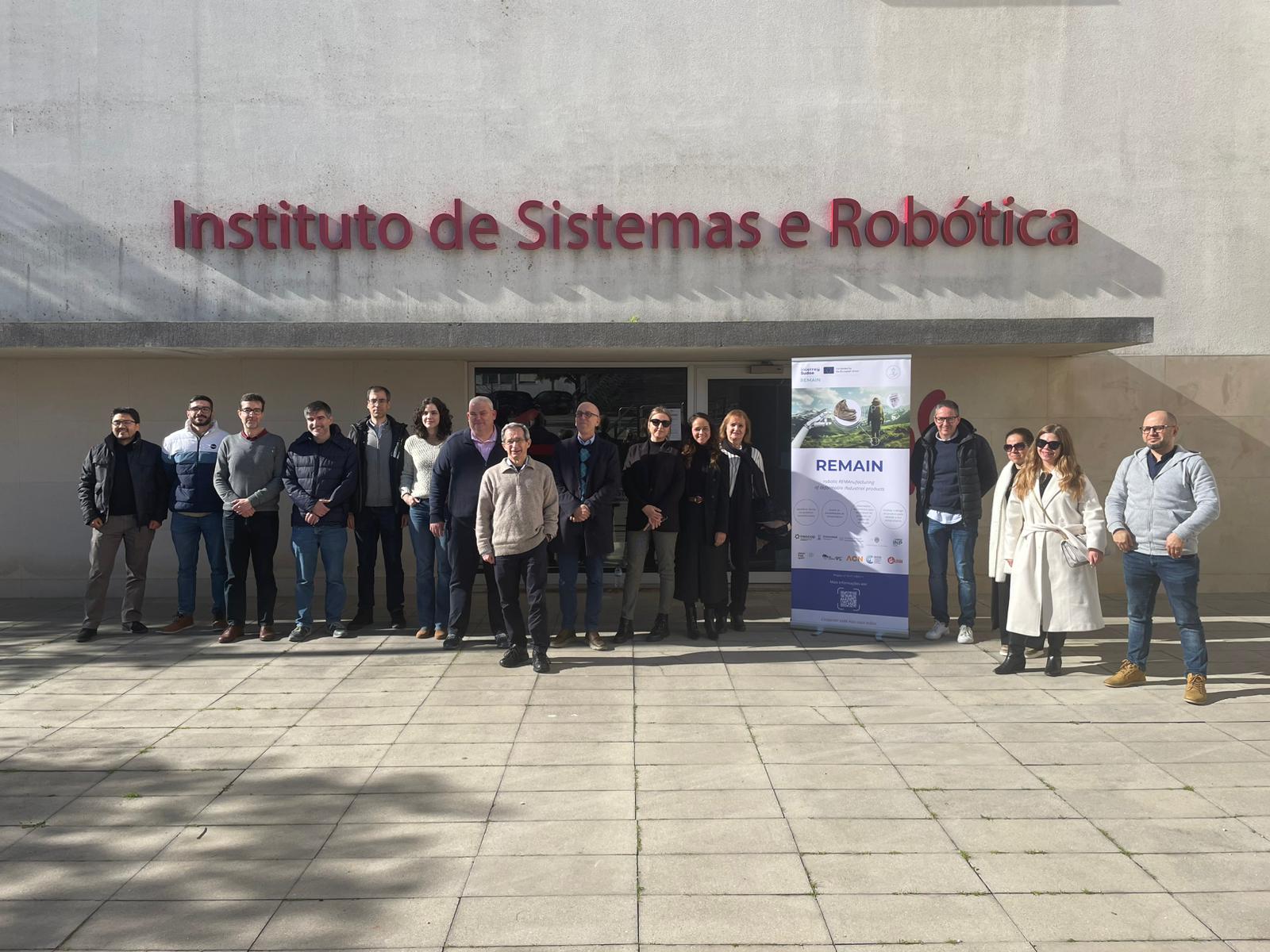The REMAIN project progresses with its first scientific publications on technological advancements and the proposal to create a database of fractures and defects detected in footwear. Once appropriately labelled, this dataset will serve as the foundation for AI-based learning.
The idea to develop this image database (dataset) was solidified during the transnational meeting held in Coimbra on January 31, attended by the partners of the European REMAIN project (Robotic REMAnufacturing of Deformable INdustrial Products), led by INESCOP – the Spanish Footwear Technology Center.
The initiative also involves the participation of the Spanish Footwear Industry Federation (FICE), AIDA CCI, the Universities of Alicante, Clermont Auvergne INP, Coimbra, and Zaragoza, as well as the Spanish company Automática y Control Numérico SL, the French company SMA-RTY, and the social association Proyecto Lázaro as a collaborating entity.
The meeting was hosted at the Institute of Systems and Robotics of the University of Coimbra, where discussions focused on the systems and methodologies that will be applied in the REMAIN project to detect damage in consumer products, with the aim of promoting their remanufacturing. Experts analysed both conventional detection systems and AI-based methods that can be applied using labelled databases.
Additionally, the role of the metasensor being developed in the project was presented. This metasensor works on the localization and identification of products and their damages using various vision technologies: RGB-D, NIR, SWIR, and TOF. The goal is to connect this with both initial defect identification and robotic perception and control to recognize objects, track them, and provide a basis for their manipulation through mono-robotic or bi-robotic systems.
In parallel, the experts identified recurring damages found in consumer goods due to use, primarily in footwear and textiles, and analysed the production processes most feasible for their potential repair or remanufacturing. The ultimate goal is to develop an eco-design guide offering suitable guidelines for the new remanufacturing paradigm.
The final part of the transnational meeting focused on communication and awareness tasks, including the results of a market study aimed at consumers and companies, the creation of an informational video, and the presentation of scientific advancements in publications and events.
In conclusion, this European project aims to promote remanufacturing and the reintroduction of products into the market to extend their life cycle, particularly in sectors with significant presence in the SUDOE region: footwear, textiles, and furniture industries. The European initiative is part of the Interreg Sudoe program, the Territorial Cooperation Program for the Southwestern European Area, which supports regional development through co-financing transnational projects via the European Regional Development Fund (ERDF).

